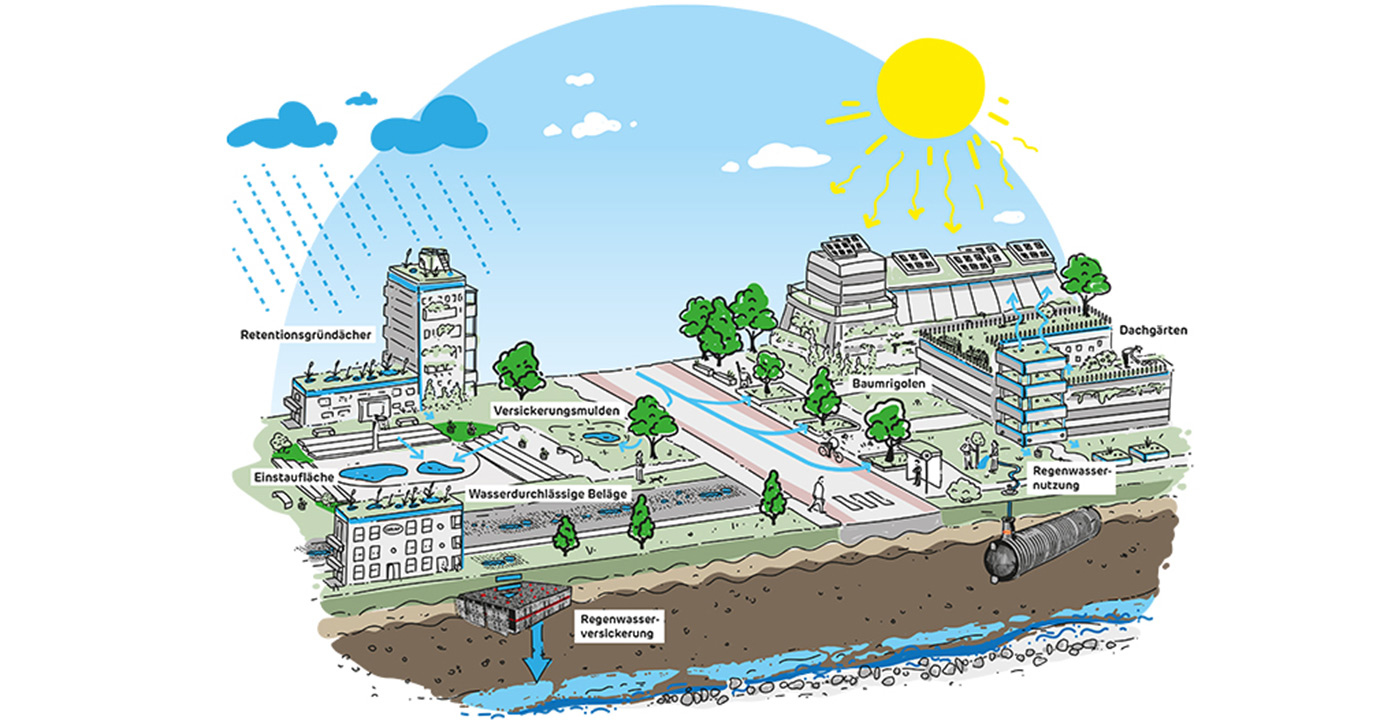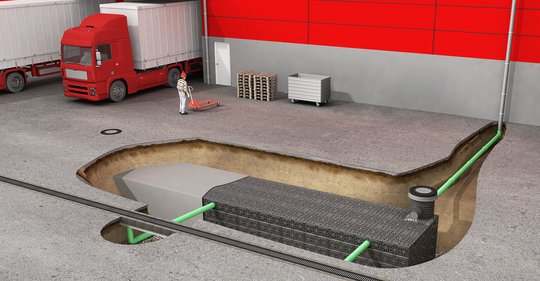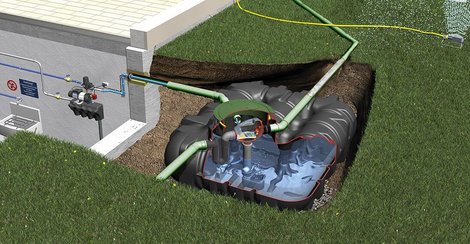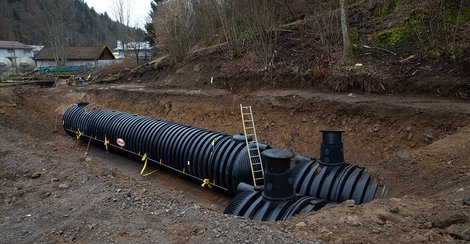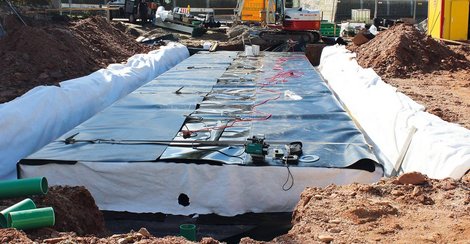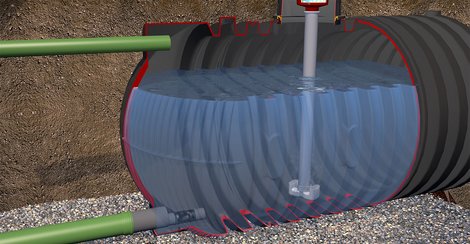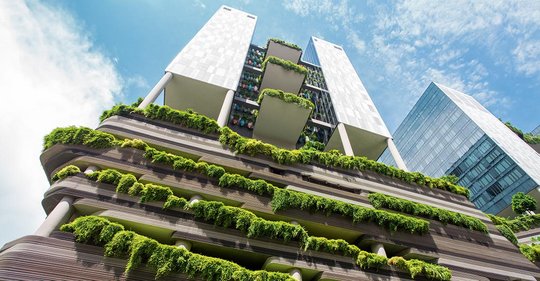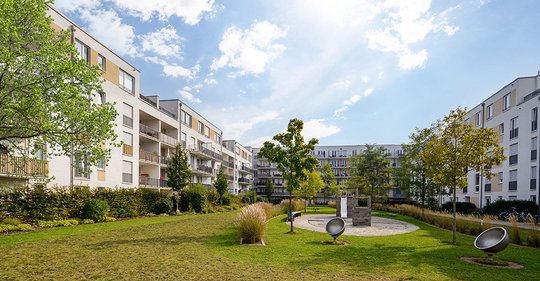Sponge City – The Future of Cities
Cities and towns are increasingly affected by heavy rain, flooding and drought. In addition, the rapid decline in the groundwater levels has alerted scientists and decision-makers to adapt the local water cycle to the challenges of climate change. One of the best adaptation strategies is the concept of the sponge city: unsealing surfaces, increasing evaporation, seeping and using rainwater.
What is the principle of the sponge city?
The principle of the sponge city is based on not draining water into the sewer but rather storing it to improve the quality of life for people and the vegetation of trees and plants. The high level of surface sealing in large cities causes two major problems. First, water is directed into the drain via the surfaces and thus not added back to the natural cycle. Second, heat islands are created during the summer months when there are long dry spells.
How can rainwater be stored locally?
Precipitation can be stored decentrally through urban green zones, wetlands, water and floodplains, as well as underground storage spaces, to ensure enough water is available during dry periods. This also promotes groundwater formation and reduces the risk of flooding during heavy rainfall events. However, it is not only green outdoor spaces that contribute to a better microclimate in cities; green roofs and facades on buildings can also absorb and use a considerable amount of water.
What steps can be taken in the context of a sponge city?
Rainwater utilisation
The use of rainwater takes on added significance in the concept of the sponge city. This not only reduces direct runoff through storage but also improves the urban climate through evaporative cooling. For example, at the E-Center in Offenburg, which is currently under construction, 75,000 liters of water are stored in one of our GRAF Platin flat tanks for the permanent irrigation of the green roof area.
We at GRAF recommend that only water from roof surfaces or comparable surfaces, such as roof terraces or balconies, be collected for rainwater utilisation. Water from parking lots and other sealed surfaces would have to be treated for use in the rainwater utilisation system, which is therefore not recommended from an economic point of view.

The subsequent installation of a rainwater utilisation system in an existing building does not require approval. If the rainwater utilization system is being installed as part of a new building, the relevant information must be provided in the drainage application for the building permit.
Percolation of Precipitation Water
If the geological formations allow it, experts believe that precipitation water from public and private areas should be allowed to seep away on site as much as possible and thus be fed directly into the natural water cycle.
Percolation systems usually require official approval. Approval-free systems are those that drain areas with little surface contamination. This includes, for example, the drainage of green roofs, gardens, meadows, roof and patio areas in residential areas, cycle and footpaths outside the road area, as well as courtyard areas and parking lots in residential areas.
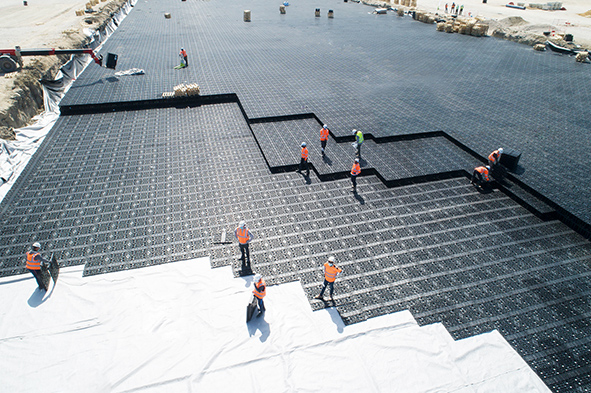
To determine whether and with what water permeability of the soil can allow water to seep away, a hydrogeological investigation on site is recommended. To assess the infiltration capacity, percussion gouge sampling or excavations are required in the vicinity of the installation site of the infiltration trench. The result is a stratigraphic model showing the distribution and thickness of the soil layers down to the excavation depth. The hydrogeological report provides a detailed description of the soil and groundwater conditions.
The permeability (kf value) of the native soil and the presence of groundwater or stratum water are the main factors determining the location and size of the trench. For rainwater seepage, the permeability coefficients (kf values) range from 10-3 to 10-6 m/s. Particularly suitable types of soil are sandy gravel, sandy silt, coarse, medium and fine sand.
Infiltration systems must not be installed in layers with a permeability of < 10–6 m/s (clay or cohesive soils containing clay). The soil must not have a permeability of ≤ 10–3 m/s, as a minimum retention time should be achieved before the groundwater enters the soil. If possible, the required kf values can be achieved by replacing the soil.
Unsealing
Asphalt, concrete or paving stones seal the surface to make it airtight and watertight. To restore the soil's natural function as far as possible, experts recommend the renaturation of impermeable surfaces.
Unsealing reduces the direct runoff of rainwater into the sewers, increases groundwater recharge through seepage and relieves the burden on public drainage systems. A positive monetary side effect is that no rainwater fees have to be paid for completely unsealed surfaces, in contrast to sealed or partially sealed surfaces.
Unsealing involves removing airtight and watertight surfaces and replacing them with a water-permeable surface. Suitable water-permeable surfaces include lawns, gravel lawns, wooden grids, grass pavers or paving with open, forced joints.
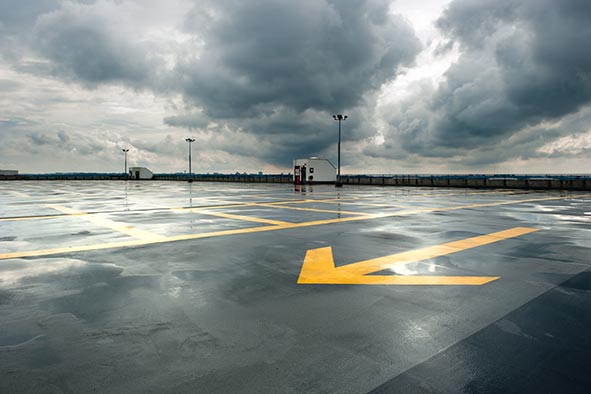
Green roofs
Green roofs have become increasingly important in recent decades for ecological, functional and design reasons. Not only do they help to cool the building in a natural way, but they also store rainwater. In general, a distinction is made between intensive and extensive greening.
In the case of intensive greening, a large proportion of the rainwater is stored in the high layer structure. This can improve direct runoff and evaporation cooling. With the help of evaporation, the risk of urban heat islands forming during longer dry periods can be reduced. However, intensive greening can only be maintained in the long term through intensive care with regular water and nutrient supply. The plants place very high demands on the layered structure of the green roof.
Extensive greening can be planted and maintained with little effort. Despite the low layer structure, direct runoff is also reduced and evaporation cooling increased in extensive greening.
Vertical Greening
In addition to green roofs, green walls, or vertical greening, are trending. This involves the planned and controlled growth of plants on suitable facades. Green walls can be categorized into ground-based and facade-based greening. In ground-based greening, the plants have a direct connection to the natural soil, requiring regular maintenance but with relatively little effort. In facade-based greening, there is no connection to the ground; the plants are supplied with water and nutrients by automatic systems, generally requiring more maintenance than ground-based greening.
Increasing Evaporation: Increased evaporation cooling through green roofs and green walls on buildings, as well as through greening of outdoor areas and trees, reduces the risk of urban heat islands forming during longer dry periods. This improves the microclimate in cities.
Root Chamber Systems for Trees
By applying the sponge city principle, trees can make a significant contribution to improving the urban climate through evaporation cooling. To optimise the growing conditions for trees, municipalities and cities are increasingly opting for the use of root chamber systems. These systems allow tree roots to develop freely, ensuring that urban trees have sufficient nutrients available for healthy and sustainable growth in the long term. Experts recommend integrating tree pits into rainwater management as retention areas that can be planted.
In this way, a sponge city can be realised with the help of our products
Our products for rainwater utilisation, retention and seepage help you to turn your city into a sponge city. With the help of our product range, projects of any size can be implemented - from small to XXL. Use the collected water for flushing toilets in your project, for example, or for greening your building. Our seepage modules help to return rainwater to the natural cycle via the groundwater, while also relieving the burden on the sewers during heavy rainfall.
Our drainage products
Our rainwater utilisation products
Our rainwater retention products
Support across the board – our GRAF sales team
Thanks to our decades of experience in drainage, we at GRAF can offer you a range of proven solutions for implementing projects in the areas of rainwater utilisation, rainwater retention and rainwater seepage – some of the main components of the ‘sponge city’. Our job is to find the most suitable technical and cost-effective solution for you. We would be happy to discuss your needs with you and provide you with suitable product suggestions in a timely manner.
Do you need expert advice or do you have questions about your project? Give us a call!
You can reach us on +4976415890.
Mon – Thu 8:00 a.m. to 5:00 p.m.
Friday 8:00 a.m. to 3:00 p.m.



